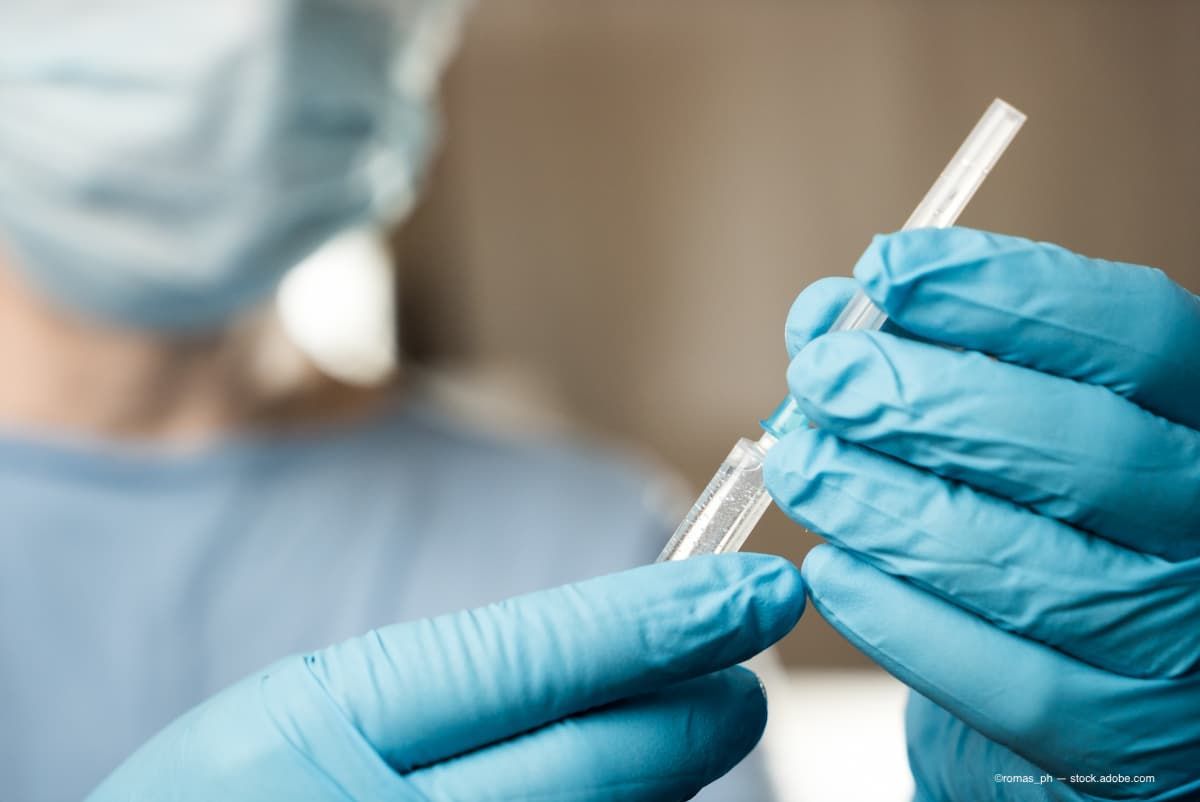Article
First patients dosed in Phase 1b/2 trial of EYE103 in nAMD, DME
Author(s):
Eyebiotech noted its AMARONE trial will evaluate the safety and preliminary efficacy of intravitreal EYE103.
(Image Credit: AdobeStock/romas_ph)

Eyebiotech Ltd. announced the dosing of the first participants in its Phase 1b/2 AMARONE (Anti-permeability Mechanism and Age-Related Ocular Neovascularization Evaluation) clinical trial in patients with diabetic macular edema (DME) and neovascular age-related macular degeneration (nAMD).
In a news release, the company noted its AMARONE trial will evaluate the safety and preliminary efficacy of intravitreal EYE103 (Restoret) and is the first clinical trial from EyeBio’s diversified pipeline of multi-specific antibodies.
Tony Adamis, MD, chief scientific officer of EyeBio, noted in the release that EYE103 has the potential to address a major unmet need in DME and nAMD, particularly excess fluid in the retina.
“Anti-VEGF registrational trials and real-world data both show that excess fluid leads to poorer vision, and the longer that fluid resides in the retina, the less opportunity there is to recover vision,” Adamis said in the news release. “Improved drying of the retina is the clearest opportunity for improvement in patients’ outcomes. Restoret addresses a new biology, which is critical if we want to deliver results beyond those seen with anti-VEGF alone.”
According to the company, EYE103 is an investigational, intravitreally delivered, tri-specific antibody that acts as an agonist of the Wnt signaling pathway. It is designed to resolve residual fluid in the retina and to improve visual acuity in individuals with NVAMD and DME, as well as other retinal diseases of permeability.
Moreover, Jonathan Prenner, MD, chief medical officer of EyeBio, added that the start of the AMARONE trial marks a key point in the company’s efforts to meet the need of patients diagnosed with DME and nAMD.
“More than 60 percent of patients have suboptimal outcomes and more than 30 percent have active disease despite treatment with anti-VEGF agents,” Prenner said in the news release “Restoret may present an opportunity to break through the efficacy ceiling we have reached with anti-VEGF standard of care.”
According to the company, the first participants dosed in the AMARONE trial were treated by J. Edward Ysasaga, MD, of Southwest Retina Specialists and Mark Barakat, MD, of Retinal Consultants of Arizona.
“Anti-VEGF monotherapy has been the gold standard for nearly two decades in retinal vascular diseases, and we are so pleased to study the impact of a new pathway,” Ysasaga said in the news release. “Our hope is that Restoret represents a new avenue past the ceiling we have hit with the standard of care. Durability remains important, and we are excited to pursue research towards improved efficacy and vision, which is our ultimate goal.”
Barakat pointed out that investigators are pointed to kick off the study into the effect of Wnt pathway agonism in retinal disease.
“While the scientific rationale has been understood for decades, we finally have a potential treatment that takes advantage of this novel mechanism of action, in hopes of helping patients with blinding diseases,” he said in the news release.
The company noted the Phase 1b/2 AMARONE (Anti-permeability Mechanism and Age-Related Ocular Neovascularization Evaluation) clinical trial is a multi-centre two-part trial consisting of an open-label multiple ascending dose (MAD) safety study, and a dose-finding single-masked comparative safety and preliminary efficacy study of intravitreal EYE103 in participants with DME and nAMD.
According to the news release, the trial plans to enroll up to 92 participants, who will receive 12-week regimens of EYE103. The primary endpoints of the AMARONE trial are safety and mean change in best-corrected visual acuity (BCVA) from baseline to Week 12 in the study eye of the participants, using the standardized ETDRS.
Eye103 is a tri-specific Wnt agonist antibody, built based on AntlerA’s ANT-Pharm technology.
“It is designed to address urgent unmet medical need in patients with back-of-the-eye diseases,” the company noted in its release. “Restoret aims to eliminate leakage in vascular diseases by agonizing the Wnt pathway to both restore and maintain the blood-retinal barrier. The result of a breakthrough in molecular design, Restoret will enable the clinical translation of the extensively studied Wnt pathway for the first time in the eye.”
The company also noted in its news release that published research has indicated Wnt signaling in the retina plays a role in the maintenance of vascular integrity, and defects in Wnt signaling cause retinal vascular leakage.
“A mimetic of norrin, which is the natural Wnt ligand in the eye, EYE103 has demonstrated efficacy in preclinical ophthalmic models, including validation in genetic models,” the company concluded in its news release.
Newsletter
Don’t miss out—get Ophthalmology Times updates on the latest clinical advancements and expert interviews, straight to your inbox.

Companies announce presentations at upcoming 2025 ARVO Annual Meeting



